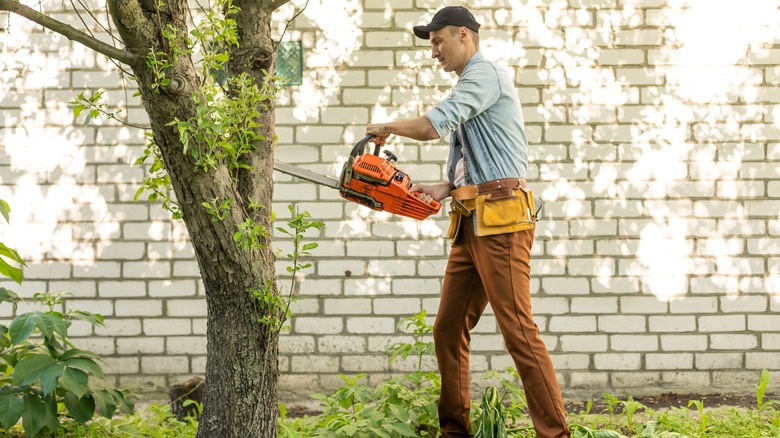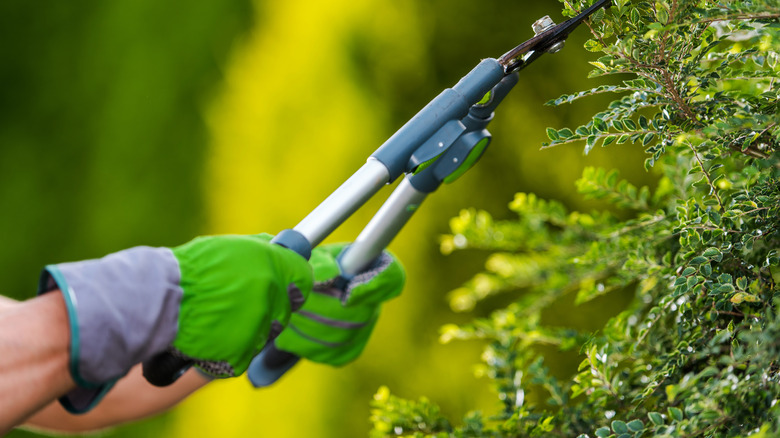Trimming Vs. Pruning: Which Is Best For Your Trees?
When you get down to the nitty-gritty of tree care, you'll see trimming and pruning as the dynamic duo keeping your trees in prime condition. They're like the essential tools in your garden care kit, each with its own special role for your trees' health and looks. The end goal for both is to keep your tree healthy. However, pruning is the more significant of the two. It's not just about snipping away what looks bad; it's like a thorough health check for your trees. Pruning gets rid of unnecessary branches — especially the dead or diseased bits. This helps the rest of the tree thrive and improve its shape, making it a must-do for any tree looking to stand tall and live long. When you prune your trees, you're doing more than cleaning up — you're giving your tree a boost, making sure it's set up for success.
Trimming, though? That's all about keeping things looking good. Imagine it as your tree's personal stylist, ensuring it fits perfectly into your garden's look. Trimming keeps your trees from going wild and taking over, helping everything in your garden live in visual harmony. It's crucial for regular maintenance and makes sure your trees add to your garden's charm without overpowering it. Even if pruning seems like it's more about the tree's health, don't underestimate the power of trimming. Both are superstars in their own right, ensuring your tree is not just a treat for the eyes but is also healthy and thriving.
Understanding tree trimming and its techniques
Trimming your trees and shrubs can really spruce them up, but there's a catch: Cut too much, and you might do more harm than good. Taking off more than 20% of the plant in one go can stress it out. But don't worry — most of the time, they bounce back after a bit of recovery time.
The key to a successful trim? Using the right tools and techniques. Sharp, clean tools are your best friends here, making those cuts heal faster and keeping disease at bay. There's a whole arsenal of equipment for trimming, from simple hand tools to more hefty power tools. Whether you're dealing with small bushes or towering trees, there's something for the job. For the smaller tasks, loppers (those large scissors for branches) and pole pruners are your best bet. For larger, tougher branches, you might need to use a chainsaw. However, branch shears are often the best choice for many trimming jobs due to their precision and ease of use.
And when should you wield these tools? Timing is crucial. You can aim to trim twice a year, with the dormant season being the prime time for most trees. This is when your trees are in their off-season, not focused on growing, which means less stress for them and a better outcome for growth when spring rolls around.
Understanding pruning: a health check for your trees
Diving into the world of pruning, it's essential to kick things off by understanding a trio of techniques that can seriously uplift your tree's health and appearance. First up: crown thinning. Think of it as decluttering your tree's canopy, removing a select few branches to let light and air move freely through the leaves. It's not about a major overhaul but about enhancing what's already there. Next, there's crown raising. This is all about giving your tree a bit of a lift by trimming away the lower branches. It's perfect for clearing up space underneath for walking, driving, or just enjoying the view. It's like ensuring your tree wears its skirt at just the right length — not too long, not too short. Crown reduction takes a bit of a different approach. If your tree's reaching out a bit too much — maybe it's encroaching on power lines or just getting too bulky — crown reduction neatly trims the overall size.
And don't forget to cut those branches that cross or rub against each other; they're only going to cause trouble by damaging the tree or inviting disease. And let's not forget about those inward-growing branches – talk about a no-go. They mess with your tree's natural architecture, leading to a confused growth pattern. Overall, pruning, at its heart, is about making informed, smart cuts and avoiding common pruning mistakes.


